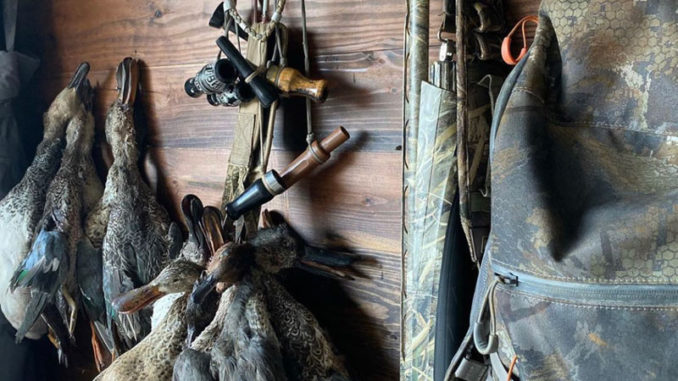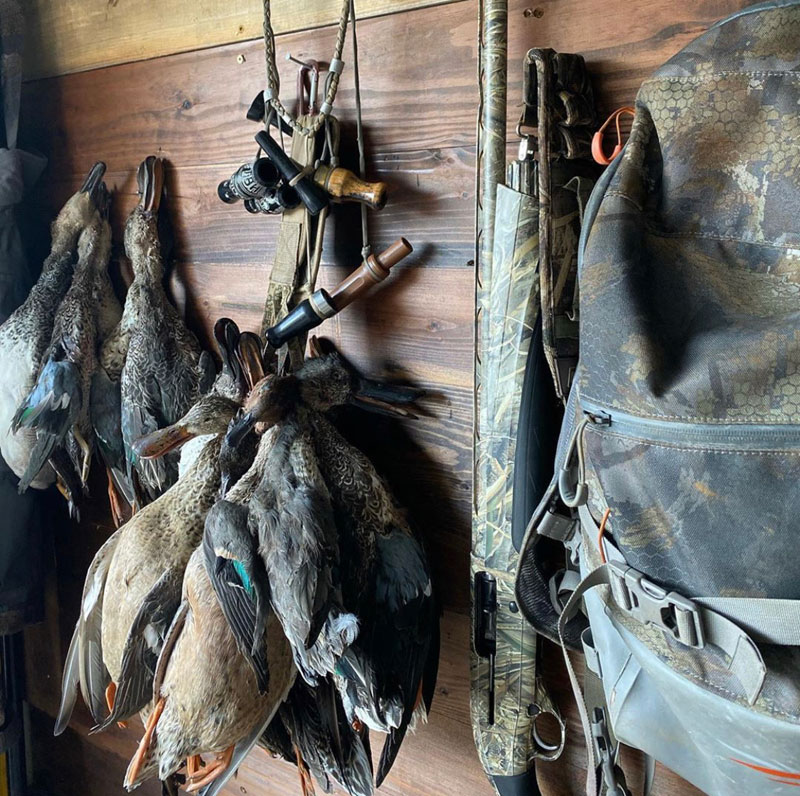
Public-land duck hunters have a job ahead of them before they head to the water, according to Owen Belknap, a veteran hunter from Ruston.
“If I can give any advice to public-land duck hunters, my advice is to scout. You can’t just roll up to Upper Ouachita and go kill birds,” Belknap said. “North Louisiana has some of the largest amounts of public land for duck hunting in the United States — massive, massive tracts of land, with lots of very viable places to hunt.
“For example, around north Louisiana, there’s primarily teal, gadwall, spoonbills and every now and then, mallards and a couple of pintail. You can go online to websites like Ducks Unlimited, which does a great job in telling you what birds eat. Gadwall eat naiad, pond weed and water milfoil, as well as smartweed, spike rush and certain aquatic invertebrates and crustaceans. Take that information and go walk around … and look for these grasses, look for these bugs. Look for the stuff that will be conducive of the right environment for those birds. This helps you eliminate areas that are not.”
What ducks eat
Belknap emphasized knowing what plants are not part of the duck’s diet.
“What would otherwise look like a good environment for a duck may have no nutritional value for them. And you end up wasting your time hunting there,” he said. “In the summer, when scouting, I start eliminating these places that aren’t going to have the vegetation that the ducks are looking for.
“When it comes time to scout in the winter and you are looking at your water levels, gadwall like a little deeper water, while teal like shallower water, where they can stand up in 2 or 3 inches of water. If I know I have a lot of teal in the area, I look around for vegetation that teal like to eat. I look at the water levels and pick out what areas will have what the teal are looking for.
“Strongly encourage people to understand the birds that they are hunting. If you understand what they like to eat, what they like to do, and where they like to go, and you put in a little extra effort throughout the year to find the places that are going to be conducive to creating the right conditions for these birds, then you are going to see success during the duck season and get more sleep for sure.”
Decoys matter
Belknap isn’t a fan of decoy spreads that don’t match the anticipated ducks.
“Almost everybody rolls around with two- to four-dozen mallard decoys, maybe a couple of teal, a couple of gadwall, and maybe one mojo in their spread,” he said. “You are much better off going and buying a dozen nice, fully flocked mallard decoys, a dozen nice gadwall, a dozen nice pintail and a dozen nice teal.

“If a hole is mainly gadwall and teal, don’t run your mallard decoys. These birds aren’t dumb. They get hunted all the time, and they know the typical-looking spread.
“If it is groups of 50 to 100, then we run a bigger spread. If we are hunting a hole, and most of them are flying around in groups of two or four and there are about 30 birds, then we will only run two-dozen decoys that are broken up into groups of two or four to make it look as realistic and life like as possible.”
Belknap said motion is key.
“Ducks have great eyesight, and when they see things that aren’t moving, they won’t buy into it, especially on public land,” he said. “I don’t run a lot of Mojos because these birds see them a lot. I run Lucky Duck agitators, jerk rigs or SOAB imitators. Basically, any product that will create water movement and mimic feeding behavior of ducks.”
Parting words
Belknap said it takes more effort from hunters to be successful these days.
“Hunting isn’t what it was 20 years ago,” he said. “Decoys are getting better; people are hiding better; birds are learning right along with us, and we have to be smarter than Mother Nature. It’s a question of whether you want to put the work in, because there are birds to be found.
“There are great hunts and great memories to be had. I would really encourage people to not give up on our WMAs and our hunting in Louisiana, because the more of us that hunt, the more money goes back into conservation and the protection of our WMAs. Which means, the more that they can do for our public lands and that’s going to create a better environment for ducks, which will create a better opportunity for you to hunt, and that’s going to create a better opportunity for future generations to hunt.
“My No. 1 tip: don’t give up on Louisiana’s public land duck hunting.”


